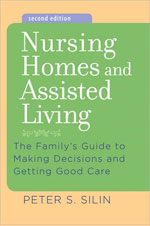How To Tie Up An Old Person
In today's Vancouver Sun there was an article on the police having purchased some new restraints that can be used on older people so that, among other things, their skin is not damaged when they are restrained. Very humanitarian. I suppose though, there are times when it is necessary.
Restraints have been a big topic in nursing homes for many years. Supposedly, most homes are implementing "restraint free" policies, meaning they don't tie people up.
Unless they are in danger. This does happen. If someone with dementia is at risk for falls, or forgets that they cannot walk or have broken a hip, they may be restrained for protection. There are usually strict guidelines about the use of restraints in wheelchairs or in beds. But if they don't understand they can't walk, they probably won't understand why they are restrained; this may cause a good bit of agitation.
It is easier still these days to chemically restrain someone, and this is more frequently done. Especially in an acute care setting an older person may be sedated because there is not the staff or the set up to manage them.
If your loved one is being restrained in any way, make sure you are informed. Find out what else has been tried, and what kind of assessment has been done that has led to the assessment. If it is with medication, make sure it is reviewed monthly, to see if the circumstances or causes have changed. Make sure other side effects will be minimalized or monitored--for example make sure someone is not oversedated. And most important perhaps, part of the assessment should include what your loved one would have wanted done and what risks they would have been willing to take for themselves if they were well or able to make those judgments for themselves.
Labels: Dementia and Restraints



